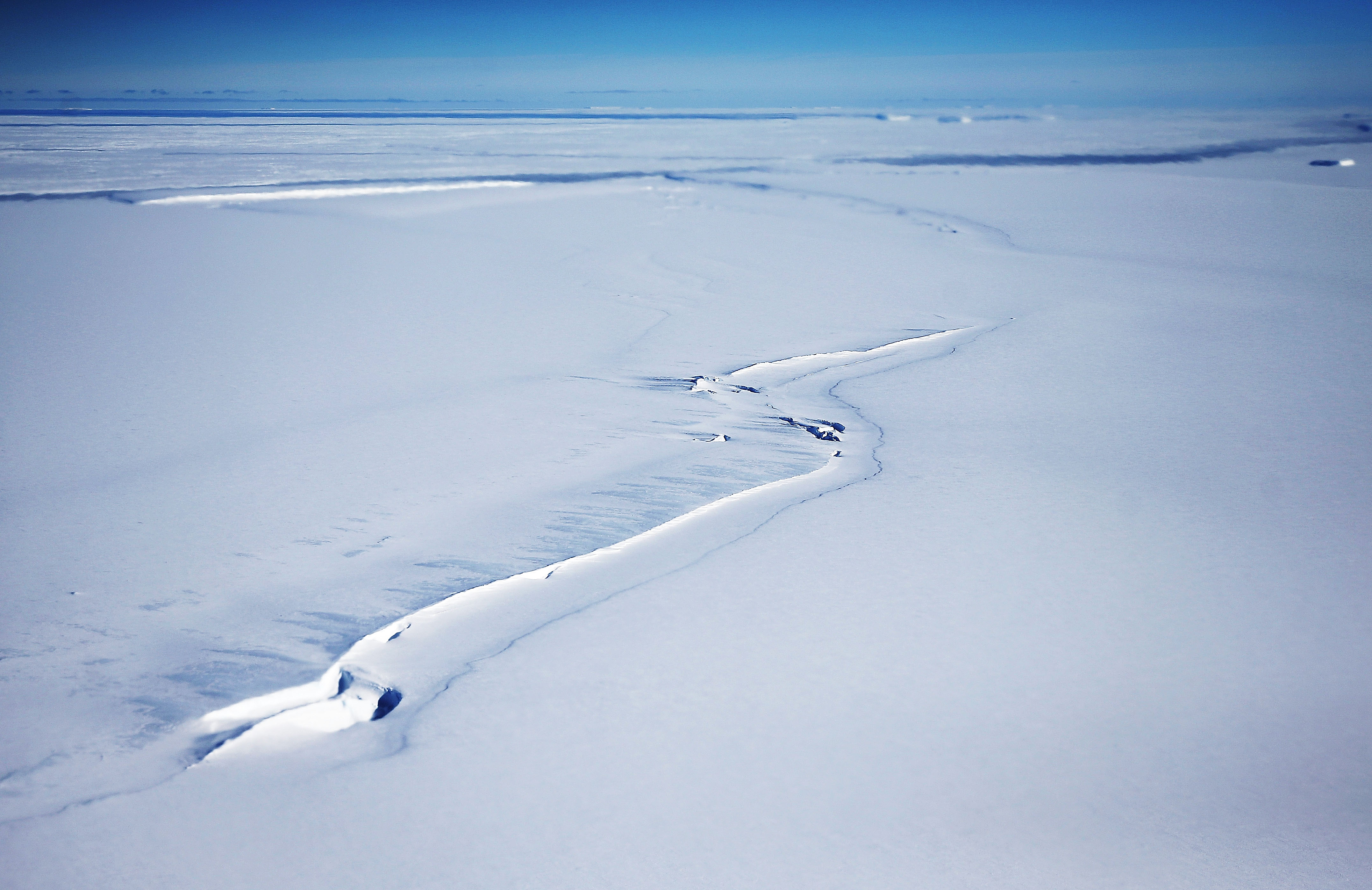The latest in a series of massive ice collapses along the Antarctic Peninsula is imminent, according to scientists tracking the lengthening crack on the Larsen C Ice Shelf.
In the past few days alone, the crack lengthened by 10.5 miles. It’s now just eight miles away from where the ice shelf meets the sea. When the slab of ice breaks away, it will be the size of Delaware, creating one of the largest icebergs on record and accelerating the flow of land-based ice to the sea, which in turn will raise sea levels.
The break-up of the shelf appears to be inevitable, says Adrian Luckman, who heads the Swansea University Project MIDAS team tracking the rapid changes on the Larsen C shelf. Based on observations from nearby ice shelf break-ups in 1995 and 2002, he says the current process is likely to hasten disintegration of the Larsen C shelf.
“The rift tip appears also to have turned significantly toward the ice front, indicating that the time of calving is probably very close,” Luckman says. “There appears to be very little to prevent the iceberg from breaking away completely.”
Ice shelves are essentially floating extensions of land-based glaciers. Larsen C is approximately 350 meters thick and floats on the seas at the edge of West Antarctica, holding back the flow of glaciers that feed into the ocean.
The formation of such large icebergs is one of the key signs of ice shelf instability, according to Ted Scambos, who studies Antarctic ice with the Boulder, Colorado-based National Snow and Ice Data Center.
Luckman says that the 2002 Larsen B ice-shelf disintegration happened after a similar rift-induced calving event. Scientists say that warmer ocean and air temperatures were factors in the break-up of the Larsen A and Larsen B shelves.

(Photo: Mario Tama/Getty Images)
The Antarctic Peninsula is one of the fastest-warming areas on Earth, and new research shows how that regional warming contributes to ice-shelf melting. Last month, scientists with the Alfred Wegener Institute released a study that shows how pulses of warm water are surging closer and closer to Antarctica and will soon undermine the Filchner-Ronne Ice Shelf, the second-largest one on the continent.
Rising air temperatures trigger a self-feeding climate feedback loop that pumps warmer water beneath the ice shelf. That will start an an irreversible melt process, accelerating ice loss and sea-level rise, says AWI ice scientist Hartmut Hellmer. Ocean temperature readings suggest that the Filchner-Ronne break-up could happen by 2070.
“There will be no turning back once the warm water masses penetrate beneath the ice shelf. The resulting meltwater will create a circulation that will suck even more warm water under the ice,” Hellmer says.
As that happens, the Filchner-Ronne ice shelf will also lose its grip on the seafloor, which will speed up the the draining of ice from the Antarctic Ice Sheet. The climate models show that even limiting warming to two degrees Celsius won’t be enough to save the Filchner-Ronne Ice Shelf.
According to NASA, the Antarctic meltdown likely isn’t limited to the ice shelves along the edges of the continent. After studying detailed readings from gravity-measuring satellites gathered between 2002 and 2016, the agency says Antarctica has been losing about 135 gigatons of ice per year, causing global sea level to rise by 0.35 millimeters per year. Most of the mass has been lost from the the West Antarctic Ice Sheet.
Hellmer says the NASA data fits with his findings, which show that warm water has already reached the Amundsen Sea.
“We can safely say that this inflow of heat cannot be stopped; the climate regime change has already taken place,” he says. “In other words, the losses of mass of the West Antarctic Ice Sheet will intensify—just as the models predict.”
And scientists with the British Antarctic Survey say the ice sheets are facing a double whammy. Along with intrusions of warm ocean water, warm föhn winds descending from the mountains are accelerating melting from above. Those winds have become more frequent and lead to the formation of melt ponds that weaken the ice sheet and make it more susceptible to cracking.
Taken altogether, the recent research raises concerns that vast areas of Antarctic ice could melt much faster than currently projected, causing sea levels to rise faster and higher than coastal communities are expecting.




